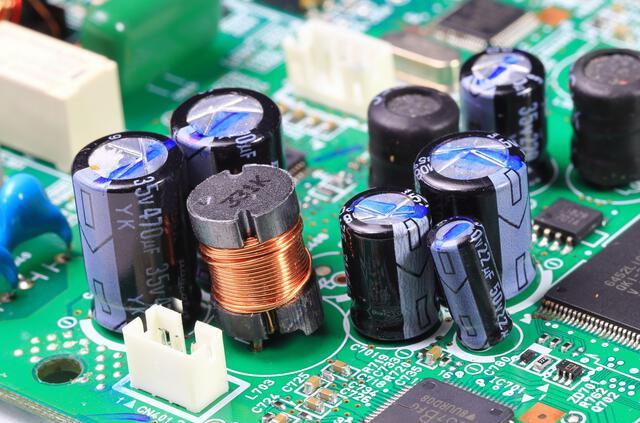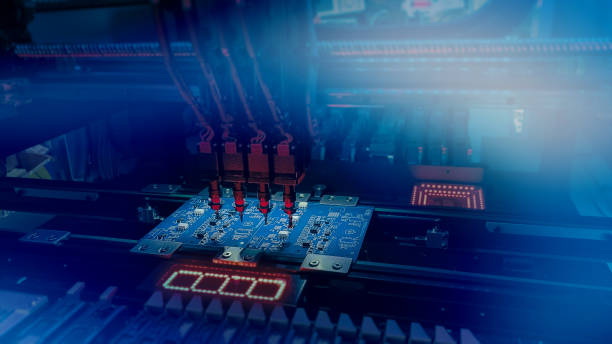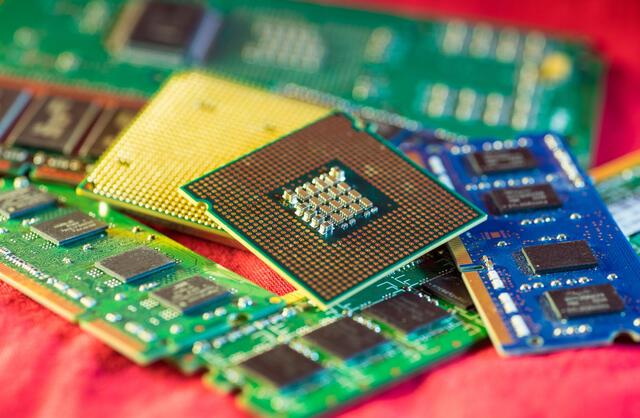Content Menu
● Understanding Surface Mount Technology (SMT)
>> Advantages of SMT
>> Disadvantages of SMT
● The SMT Assembly Process
>> 1. Design and Layout
>> 2. Solder Paste Application
>> 3. Component Placement
>> 4. Reflow Soldering
>> 5. Inspection and Testing
● Challenges in SMT Assembly
>> 1. Component Handling
>> 2. Thermal Management
>> 3. Design Complexity
>> 4. Supply Chain Management
>> 5. Environmental Considerations
● Future Trends in SMT Technology
>> 1. Miniaturization
>> 2. Advanced Materials
>> 3. Automation and AI Integration
>> 4. Internet of Things (IoT) Integration
>> 5. Industry 4.0 Adoption
● Conclusion
● FAQ
>> 1. What is Surface Mount Technology (SMT)?
>> 2. What are the advantages of using SMT over traditional methods?
>> 3. How does the reflow soldering process work?
>> 4. What challenges do manufacturers face when using SMT?
>> 5. What future trends should we expect in SMT technology?
The evolution of electronics has led to significant advancements in manufacturing techniques, particularly in the assembly of printed circuit boards (PCBs). One of the most prominent methods used today is Surface Mount Technology (SMT). This article delves into the intricacies of how PCBs are populated with SMT components, exploring the processes, advantages, and challenges associated with this technology.

Understanding Surface Mount Technology (SMT)
Surface Mount Technology is a method that allows electronic components to be mounted directly onto the surface of a PCB. Unlike traditional through-hole technology, where components are inserted into holes drilled in the board, SMT components are soldered onto pads on the board's surface. This technique has revolutionized the way electronic devices are designed and manufactured.
Advantages of SMT
- Reduced Size and Weight: SMT components are generally smaller and lighter than their through-hole counterparts, allowing for more compact designs. This is particularly important in portable electronics, where space and weight are critical factors.
- Higher Component Density: The ability to place components on both sides of a PCB increases the density of components, leading to more complex circuits in a smaller footprint. This density allows for more features to be integrated into devices without increasing their size.
- Improved Performance: SMT can enhance electrical performance due to shorter lead lengths and reduced parasitic inductance and capacitance. These improvements can lead to faster signal speeds and better overall functionality.
- Automated Assembly: The use of automated machinery for placement and soldering reduces labor costs and increases production speed. Automation not only speeds up the process but also minimizes human error, ensuring higher quality control.
Disadvantages of SMT
While SMT offers numerous benefits, it also has some disadvantages:
- Repair Difficulty: SMT components can be more challenging to repair or replace due to their small size and dense arrangement on PCBs. Specialized tools and techniques are often required for effective repairs.
- Thermal Sensitivity: Many SMT components are sensitive to heat, which can lead to damage during soldering or operation if not properly managed. This necessitates careful thermal management during both assembly and operation.
- Initial Setup Costs: The initial investment in automated machinery for SMT assembly can be high. However, this cost is often offset by the efficiencies gained during mass production.
The SMT Assembly Process
The process of populating PCBs with SMT components involves several key steps:
1. Design and Layout
Before any physical assembly occurs, engineers design the PCB layout using Computer-Aided Design (CAD) software. This layout includes:
- Placement of components
- Routing of electrical connections
- Design of solder pads
The design phase is crucial as it determines how well the final product will perform. Engineers must consider factors such as signal integrity, electromagnetic interference, and thermal management during this stage.
2. Solder Paste Application
Once the design is finalized, solder paste is applied to the PCB. This paste is a mixture of metal solder and flux, which helps in the soldering process. The application methods include:
- Screen Printing: A stencil is used to apply solder paste precisely onto the pads. This method is widely used due to its efficiency in high-volume production.
- Stencil Printing: A thin metal stencil allows for accurate paste application without excess. This technique ensures that only the necessary amount of solder paste is applied, reducing waste.
- Jet Printing: An emerging technology that uses a jetting system to deposit solder paste directly onto pads without a stencil. This method offers flexibility in prototyping and low-volume production runs.
3. Component Placement
After applying solder paste, SMT components are placed onto the PCB using automated pick-and-place machines. These machines can accurately position thousands of components per hour, ensuring high precision and efficiency.
The placement process involves:
- Vision Systems: Many pick-and-place machines are equipped with vision systems that verify component placement accuracy before soldering occurs.
- Flexibility: Modern machines can handle a wide variety of component types and sizes, making them suitable for diverse product lines.
4. Reflow Soldering
Once all components are placed, the PCB undergoes reflow soldering. This process involves heating the entire board in a controlled environment to melt the solder paste. As it cools, it solidifies, creating strong electrical connections between the components and the PCB.
The reflow process consists of several phases:
- Preheat Stage: The PCB is gradually heated to prepare it for soldering. This stage helps prevent thermal shock to sensitive components.
- Soak Stage: The temperature is maintained at a specific level for a short period to allow flux activation and component stabilization.
- Reflow Stage: The temperature reaches peak levels where solder melts completely. This stage requires precise control to avoid overheating.
- Cooling Stage: The board is cooled down rapidly but uniformly to ensure proper solidification of solder joints.
5. Inspection and Testing
After reflow soldering, PCBs are inspected for defects. Common inspection methods include:
- Automated Optical Inspection (AOI): Cameras scan the board for misaligned or missing components. AOI systems can quickly identify issues that may affect performance or reliability.
- X-ray Inspection: Used for detecting hidden solder joints in multi-layer boards or underneath large components like BGAs (Ball Grid Arrays).
- Functional Testing: After visual inspections, functional tests ensure that each PCB operates as intended under various conditions.
Testing ensures that each PCB functions correctly before it is sent for final assembly into electronic devices.
Challenges in SMT Assembly
While SMT offers numerous advantages, it also presents several challenges that manufacturers must address:
1. Component Handling
SMT components are small and can be easily damaged during handling or placement. Manufacturers must implement careful handling procedures to avoid damage.
This includes using specialized tools designed for small parts and training staff on best practices for handling delicate electronic components.

2. Thermal Management
The compact nature of SMT assemblies can lead to overheating issues. Effective thermal management solutions must be integrated into designs to ensure reliable operation.
Techniques include:
- Thermal Pads: Using thermal pads or vias to dissipate heat away from sensitive components.
- Heat Sinks: Adding heat sinks or fans to manage heat in high-power applications.
- Material Selection: Choosing materials with good thermal conductivity for PCBs can help manage heat distribution effectively.
3. Design Complexity
The increased density of components can complicate PCB designs, making them harder to manufacture and troubleshoot. Engineers must balance complexity with manufacturability by:
- Simplifying layouts where possible.
- Using simulation tools during design phases to predict potential issues before production.
- Collaborating closely with manufacturing teams during design reviews to ensure feasibility.
4. Supply Chain Management
Managing supply chains effectively is crucial in SMT assembly due to component shortages or delays that can disrupt production schedules. Manufacturers must establish strong relationships with suppliers and maintain adequate inventory levels to avoid interruptions.
5. Environmental Considerations
With increasing regulations around environmental sustainability, manufacturers must consider eco-friendly practices in their SMT processes. This includes using lead-free solders and minimizing waste through efficient manufacturing practices.
Future Trends in SMT Technology
As technology continues to advance, several trends are emerging in SMT assembly:
1. Miniaturization
The push for smaller electronic devices drives further miniaturization of SMT components. Manufacturers are developing even smaller packages while maintaining performance standards.
This trend includes innovations such as:
- Chip-on-board (COB) technology where bare die are directly attached to PCBs.
- Development of ultra-small passive components that occupy less space without sacrificing performance.
2. Advanced Materials
New materials are being explored to improve thermal conductivity and reliability in SMT assemblies. These materials aim to enhance performance while reducing size.
Examples include:
- Low-temperature co-fired ceramics (LTCC) which offer excellent thermal properties.
- Flexible substrates that allow for innovative form factors in wearable electronics.
3. Automation and AI Integration
The integration of artificial intelligence into manufacturing processes promises to improve efficiency and reduce errors in component placement and inspection.
AI technologies can help by:
- Predictive maintenance on machines based on usage patterns.
- Real-time monitoring systems that adjust processes dynamically based on feedback from inspections.
- Enhanced data analytics that provide insights into production efficiency and quality control metrics.
4. Internet of Things (IoT) Integration
As IoT devices proliferate, there will be an increased demand for PCBs populated with SMT components tailored specifically for connectivity features such as wireless communication modules or sensors integrated directly onto the boards themselves.
This integration will require manufacturers to adapt their processes continuously while ensuring compliance with various communication standards like Bluetooth or Wi-Fi protocols.
5. Industry 4.0 Adoption
The rise of Industry 4.0 emphasizes smart manufacturing practices through interconnected systems that enhance productivity through data-driven decision-making processes across supply chains involved in electronics manufacturing including SMT assembly lines.
Conclusion
The process of populating PCBs with SMT components has transformed modern electronics manufacturing, enabling smaller, more efficient designs that meet consumer demands for compactness and performance. While challenges remain—such as handling delicate components and managing thermal issues—the ongoing advancements in technology promise a bright future for SMT assembly processes.
With its numerous benefits and continuous evolution, Surface Mount Technology remains at the forefront of electronic manufacturing innovation, paving the way for smarter devices that integrate seamlessly into our daily lives while pushing boundaries in terms of functionality and design possibilities.

FAQ
1. What is Surface Mount Technology (SMT)?
Surface Mount Technology (SMT) is a method used to mount electronic components directly onto the surface of a printed circuit board (PCB) rather than inserting them through holes.
2. What are the advantages of using SMT over traditional methods?
SMT offers several advantages including reduced size and weight, higher component density, improved electrical performance due to shorter lead lengths, and increased efficiency through automated assembly processes.
3. How does the reflow soldering process work?
Reflow soldering involves heating a PCB with applied solder paste to melt the solder, creating strong electrical connections as it cools down and solidifies.
4. What challenges do manufacturers face when using SMT?
Manufacturers face challenges such as handling delicate small components, managing thermal issues due to compact designs, dealing with increased complexity in PCB layouts, supply chain management difficulties, and environmental considerations regarding sustainability practices.
5. What future trends should we expect in SMT technology?
Future trends include further miniaturization of components, exploration of advanced materials for better performance, increased automation through AI integration in manufacturing processes, IoT integration into devices requiring specialized PCBs populated with connectivity features, and broader adoption of Industry 4.0 principles enhancing smart manufacturing capabilities.




















